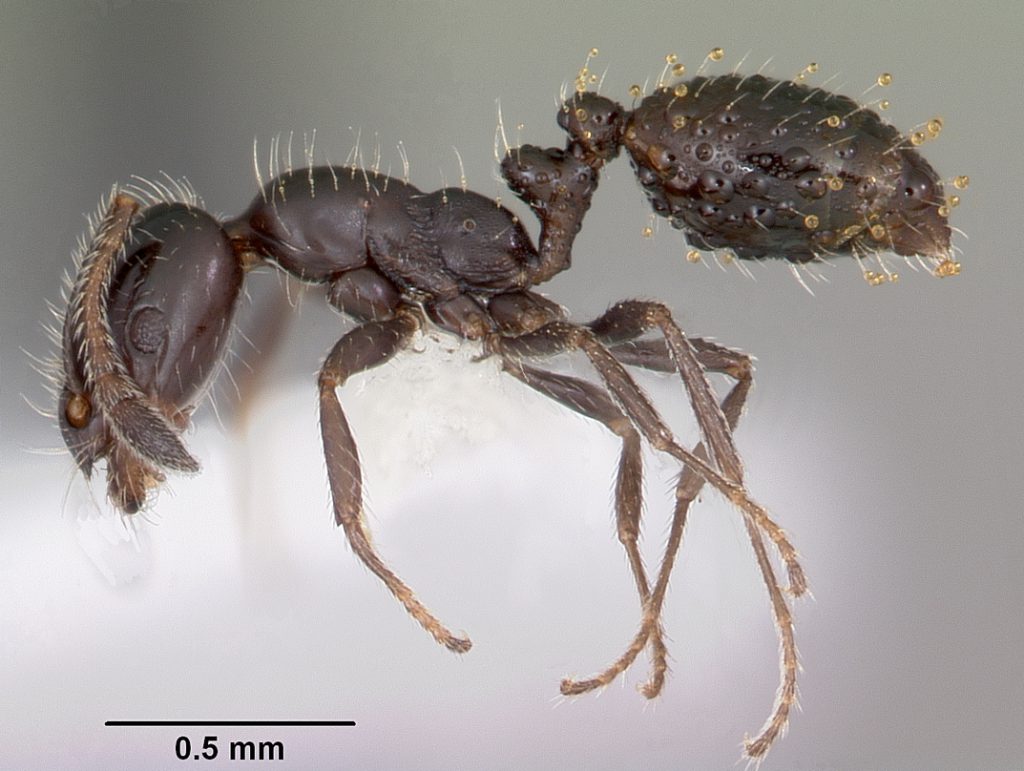SERVICE REQUEST?
Fill out the form below.
Find our nearest location
Your Local Office

Little Black Ant
Attribution: April Nobile / © AntWeb.org / CC-BY-SA-3.0
Size:
Workers of this species measure about 1/8-inch in length. Colonies contain multiple queens who are 2 to 3 times larger than the workers.
Color:
Black
Behavior:
Little black ants are usually seen around homes following well-defined trails between the nest and food and water sources. They feed on a wide variety of foods, but the workers are partial to the sweet honeydew produced by aphids, scales, and mealybugs found feeding on many trees and plants. Fruit trees, roses, and many shrubs serve as hosts for aphids and may contribute to ant infestations in homes and other buildings. Most infestations inside are the result of workers searching for food. On occasion, a colony or part of a colony may establish itself inside a wall, behind brick veneer or beneath the carpet by a doorway.
This ant will take advantage of any suitable, moist space to locate its colony. It is commonly found infesting rotted logs, stumps, and fence posts and may be found in tree holes and dead tree limbs far above the ground. Nests are also commonly located within piles of lumber, rocks, bricks, and similar items.
Infestations of little black ants often require patience and skill to follow the trails back to the nest. The type of treatment used depends on the location of the nest (e.g., inside wood, within a brick pile, etc.). Baits can be effective but require persistence and follow-up to achieve results. General tips for limiting ant infestations include:
- Eliminating piles of lumber, bricks, or other debris that could serve as a nesting site for ants.
- Keeping landscape mulch less than 2 inches thick and at least 12 inches away from foundations.
- Ensuring the sprinkler system does not spray directly onto the foundation.
- Sealing as many cracks in the building’s exterior as possible.
- Keeping tree and shrub branches trimmed to prevent touching the building.
- Considering re-landscaping to avoid using plants that are prone to aphids and similar insects. At the very least, treat such plants for aphids regularly. A tree/shrub company, such as TruGreen, can be helpful with this task.
Family Name:
Monomorium minimum
Read What Our Clients
Are Saying
My Terminix tech Scott is the best! He is professional, courteous and absolutely thorough about his job. Thank you for sending such a blessed tech to my house. Hamlet, NC
This letter is to say how pleased we are here at Morreene West Apartments with your services. We are very pleased with the technician, Christopher. He does a great job. Durham, NC
Terminix has consistently offered our apartment complex reliable, competent service. We are completely satisfied with their knowledgeable representative who is always punctual and does a superior job for us every time. Chapel Hill, NC
I would like to take the time to thank you for giving us such great service here at Carver Pond Apartments. Your Pest Technician Christopher Mitchell has provided us with excellent service over the last few months. Christopher is such a great help to us in providing helpful information so that we can better serve our residents here at Carver Pond. Durham, NC
SERVICE REQUEST?
Fill out the form below.